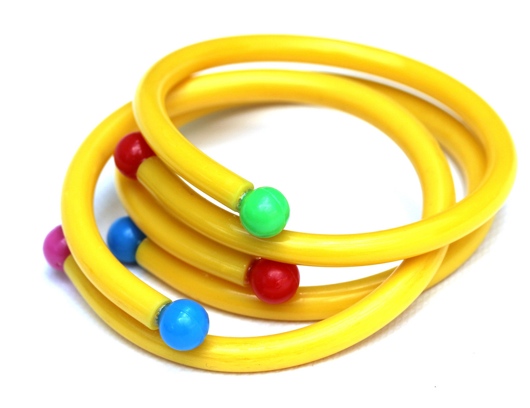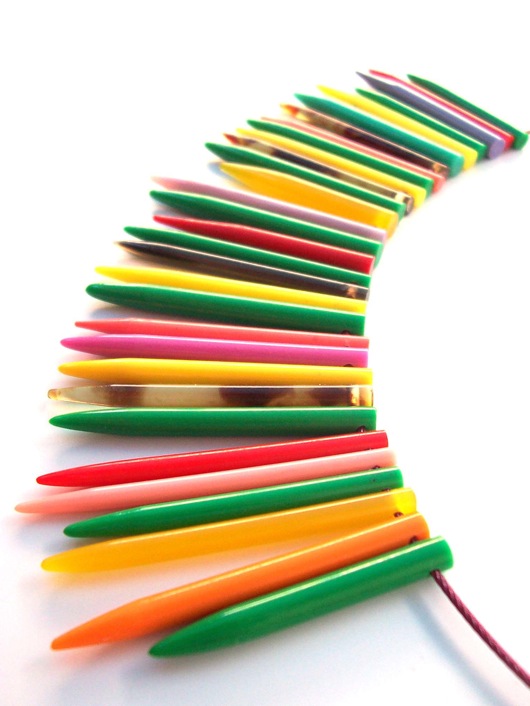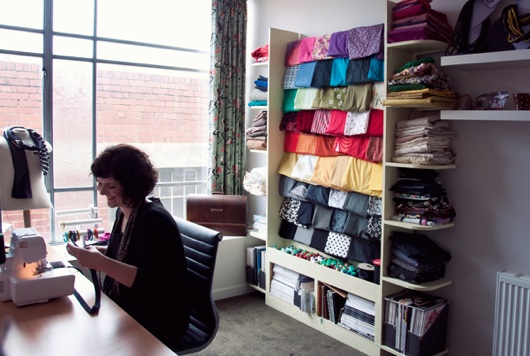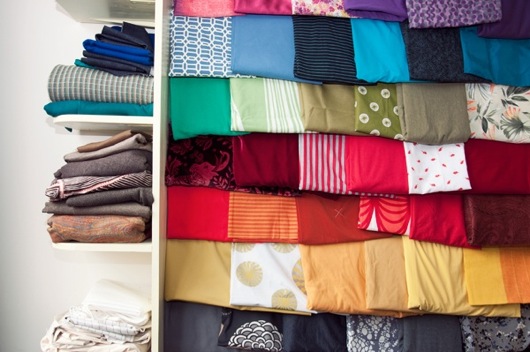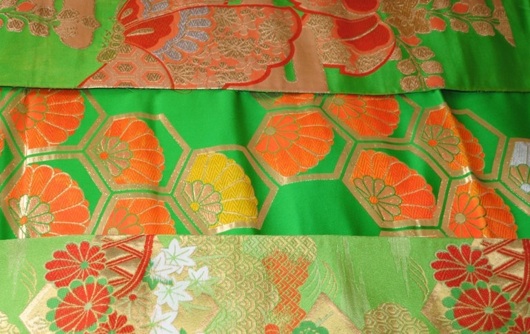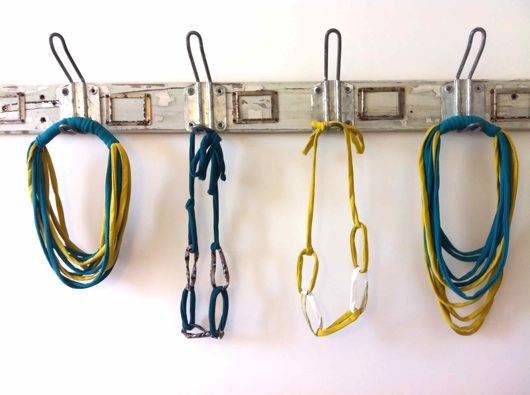Eco-Friendly Practice: Hayley Morris
By Phoebe Miller This month's eco-friendly profile takes a slightly different turn. In our first few posts, we've focused on creative ladies who operate product-focused creative practices. However, I wanted to acknowledge that there are a lot of creative women out there who are doing other work relating to environmental sustainability that involves a great deal of creativity.
Enter Hayley Morris: Founding Director of Sustainable Table, an environmental not-for-profit organisation based in Melbourne that uses food as an entree to explore sustainability issues and support environmental projects in developing communities.
You may have already heard of The Sustainable Table Cookbook, a collection of recipes and stories from notable chefs, farmers, producers, winemakers, gardeners and everyday people who are reducing their impact on the environment by altering their food choices. As I discovered in doing this interview, there's a lot more to learn from and be inspired by in Hayley's work than just delicious recipes.
What do you do? I work on two enterprises, one a not-for-profit (Sustainable Table) and the other for-profit social enterprise (Impact Sustainability).
Sustainable Table is a young, innovative organisation that empowers individuals to use their shopping dollar as a vote for a food system that is fair, healthy, humane and good for the environment. We do this by providing knowledge and resources, run innovative and challenging events and harness the media and social media platforms to assist individuals to make conscious decisions about where they shop and what they buy.
We also acknowledge how lucky we are to be living in a country that is generally food secure, so we 'give back' by supporting projects in developing communities that assist with the food security of the community. Projects include building compost toilets in Kenya that improve local, small-scale farming as well as provide basic sanitation in a region where water borne diseases are rift; solar cookers for Tibetan Villages in China; and micro finance to support the development of small-scale agricultural projects in Kenya.
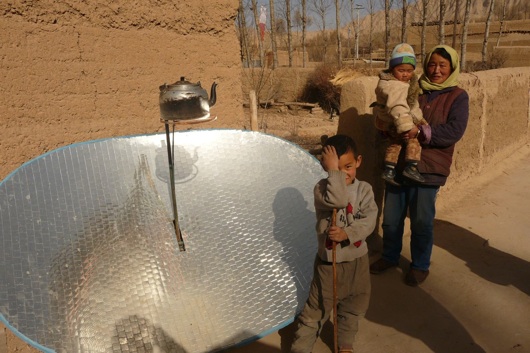 Sustainable Table's solar cooker project
Sustainable Table's solar cooker project
Impact Sustainability supports businesses to better understand their environmental impact via an affordable and easy-to-use online tool, Impact Management System (IMS).
The system was developed after I had spent time consulting to help companies understand their environmental footprint and ways to reduce it. It was clear that all businesses would find it hard to continue to maintain the actions they had started and improve on their environmental performance if they didn't have a system to help support this process. After all, 'what get's measured, get's managed'.
A market scan showed that the systems on offer were complex and expensive, targeting large companies with complex greenhouse gas emission portfolios. With IMS I wanted to create a system that was simple and affordable and benefited the environment as more companies could afford to take action. In addition a percentage of revenue would be used to support Sustainable Table.
How do you approach sustainability and environmental awareness in your work? We use creative and innovative ideas to educate and empowering individuals and companies to act more environmentally sustainable. We have a strong focus on design, marketing and communications as a way to engage people. I believe this is a real point of difference for Sustainable Table and I think it’s why people have been really engaged with our work.
The Sustainable Table cookbook
Can you tell us about your favourite project to date? The Sustainable Table cookbook is definitely a key project where design and creativity was key in creating a successful book. Our challenge was to try and get people who don’t normally care about the environment to pick up the book, buy it and then learn something about how they can make a difference. In order to ‘hook’ people in we knew we needed the book to look beautiful and work as a functional cookbook. The first edition won Australian printed book of the year, so some people must think we did a good job!
 Internal layouts from The Sustainable Table cookbook
Internal layouts from The Sustainable Table cookbook
Innovative events also form a big part of your work. What events have you held recently? Our Melbourne Food and Wine Festival sell-out event in March, hosted at the Robert Burns Hotel in Collingwood, set to challenge guests with the reality of how meat ends up on their plate. With most Australians eating roughly their own weight in meat each year (80kg) and with more than 500 million animals housed in factory farms, the aim was to raise awareness around the environmental and ethical issues surrounding meat production in Australia, whilst contrasting that with dining on wild rabbit. The event was profiled on ABC’s 7.30 Report and in Broadsheet.
In February this year, we held an event as part of the Sustainable Living Festival. A Dirty Granny Jamming Session was all about preserving excess produce. What do the granny skills of the past have to do with the way of the future? If there's one thing all grannies are good at, it's this - preserving, jamming and bottling excess produce to avoid food waste. These vintage kitchen skills have seen a resurgence in recent times, and their importance cannot be underestimated given Australians throw out $5.2 billion worth of food each year. Our event set to educate people on food waste and provide them with a set of Staples from Scratch recipes to kick-start their zero-waste enthusiasm.
What challenges have you come up against in trying to make your work more sustainable and how did you overcome them? There is definitely a higher cost in making things sustainable, for example we were faced with the question of lowering our printing costs of The Sustainable Table cookbook significantly by printing the book in China, therefore increasing our margins. However it was important to us and the ethos of the book to ensure it was printed locally, on 100% recycled paper and by printing standards that have the least impact on the environment.
Are you inspired by any other creative women? Probably my colleague Cassie Duncan. She is so passionate, creative and inspiring - she is the real heart behind Sustainable Table.
Phoebe Miller is a Brisbane-bred, Sydney-fled, Melbourne-embedded gal who enjoys making, spruiking, collecting, exploring, telling her friends where to eat and posting photos of doors on instagram. After several years working in corporate marketing and communications, Phoebe followed the urge to explore her creative side. These days she divides her time between her sustainable fashion accessories label, Simply Phoebe, and freelance PR consulting.
Eco-friendly Practice: Liana Kabel
By Phoebe Miller In my opinion, this month's eco-friendly creative lady featuree embodies a lot of what the CWC is all about. Liana Kabel juggles motherhood with running her own creative practice and working with other women to help turn their dreams and ideas into business success. From my observation, she does it all with a smile and the attitude that while it might be a challenge, it's also rewarding and incredibly worthwhile.
Liana Kabel Push Pin Bangles - knitting needles, push pins
Originally from Sydney, but now residing in Brisbane, Liana has a diverse, broad ranging creative background, with experience in ceramics, photography, painting, fibre arts, costume design and the performing arts. These days her artistic practice focuses on the design and handcrafted production of contemporary jewellery, predominantly using recycled plastics. With a Tupperware Lady mother and jeweller father, she says it's hardly surprising where she's ended up!
Knitwit Necklace by Liana Kabel - vintage knitting needles, stainless steel, button
What do you do/ design/ make? I’m a jewellery designer with a focus on using recycled plastics. I’m really interested in going beyond the jewellery in the future to include more sculptural work and wall pieces.
I am also the manager of the Brisbane programs for Bizness Babes, a not for profit organisation with a range of business training programs for women who want to turn their idea into a business.
What are the key elements in your sustainable or eco-friendly approach? Most of my materials are recycled, found, vintage plastics and metals, sourced locally.
I’m keen to create as little waste from any project as possible, but when I do, I try to use the waste in other projects. For example, my love knot rings and knot brooches are made from the middle sections of the knitting needles, once I’d used the tips and tops for necklaces and earrings.
Liana Kabel studio detail
Where do you source your materials? I’m always on the lookout! Markets and op shops are a great source, however lots of my materials are donated. Customers, friends and relatives will often send me parcels of odd knitting needles, buttons, plastics lids etc. Reverse Garbage is a great source whenever I need something like acrylic or rubber.
Many of the materials I’m using this year are from my relatives. My Uncle had a jewellery factory in Sydney and so did my Great Uncle. My Father and another Uncle also had a jewellery retail and wholesale business. I’ve inherited some of the materials that span over 60 years of their various businesses.
Liana Kabel earrings materials
Is there anything you’d like to do or learn to make your work even more eco-friendly or sustainable? I’d really like to learn more about bio resins/eco-friendly plastics and how to work with them. I’m also interested in collaborations with other designers/artists across different fields who share a similar focus. I am also going to work more on make more small changes such as packaging, printing etc. They all can add up to much.
Tupperware Dress by Liana Kabel - recycled Tupperware, steel jump-rings
Are there any other designers or businesses doing new or interesting things with an environmentally aware focus that you admire or are inspired by? I love amazing design done well with as little environmental impact as possible. I think it’s great when the first thing you notice is great design. Melissa shoes are a great example. Melissa has been quietly leading an ecological fashion revolution for nearly thirty years. Melissa shoes are made from eco friendly mono materials that can easily be disassembled and recycled. 100% of materials are used in production. No waste. No dumping excess into landfill.
I am always inspired by businesses that are as much about people as the environment - when the social and environmental impact is considered equally. When those can go hand-in-hand I think the impact and long term benefits are the greatest.
Where can we view and/or buy your work? Stockists and my online shop can be accessed via my website.
Liana Kabel Pied Piper Necklace - vintage games counters, recycled acrylic, coat hangers and sterling silver
Phoebe Miller is a Brisbane-bred, Sydney-fled, Melbourne-embedded gal who enjoys making, spruiking, collecting, exploring, telling her friends where to eat and posting photos of doors on instagram. After several years working in corporate marketing and communications, Phoebe followed the urge to explore her creative side. These days she divides her time between her sustainable fashion accessories label, Simply Phoebe, and freelance PR consulting.
Eco-friendly Practice: Studio Common Ground
By Phoebe Miller In my own experience working in marketing and communications and creating marketing materials for my creative work, I know it can be difficult and confusing to navigate some of the options, complexities and costs involved in minimising the impact of your output on the environment. Thankfully, it is becoming easier, due to increasing in awareness and education and a growing demand for eco-friendly production.
This month we're turning our (energy efficient) spotlight onto an small design collective called Studio Common Ground, who aim to work with people who have like-minded ethical and sustainable business objectives to develop simple, meaningful and effective design. Working across a variety of projects and media, they look at sustainable outcomes for both the client and our environment with every project.
Intrigued, I spoke to Jessie Brooks-Dowsett from Studio Common Ground to find out more.
 Studio Common Ground business cards, made using unwanted paper samples.
Studio Common Ground business cards, made using unwanted paper samples.
Can you tell me about the key elements behind the eco-friendly side of your work? Sustainability, in our opinion, is about awareness and education. So with every new project we're approached to be involved in, we try and work closely with our clients to gain insight into their business objectives and then translate them into a meaningful communication design piece that is environmentally mindful. Whether that means we develop a paperless outcome, use recycled materials or create an aesthetic that relies on using techniques like die-cutting or embossing to replace ink colours. We also make sure we confer with our printers in the early stages of of the design process to understand their press sheet sizes and find the most efficient way to set up the job, maximising the amount of pieces we can fit on the press sheet and minimising the paper waste. At Common Ground we believe that these small measures will make a big difference in the long run.
We've had the opportunity to work with a lot of clients who have been environmentally mindful; printing on sustainable products and using non toxic inks or waterless printing techniques. But, I think our own branding is the best example of using materials creatively to produce a more eco-friendly result. As designers, we are sent A LOT of paper samples, stock options and paper promotions from various paper reps and whilst we could recycle most of these products, Common Ground thought we'd put an extra loop in their life cycle! We had some rubber stamps made up of our logo and now we trim up all the un-used paper stocks and samples and stamp them to make our business cards.
 Work in progress: putting good use to packaging
Work in progress: putting good use to packaging
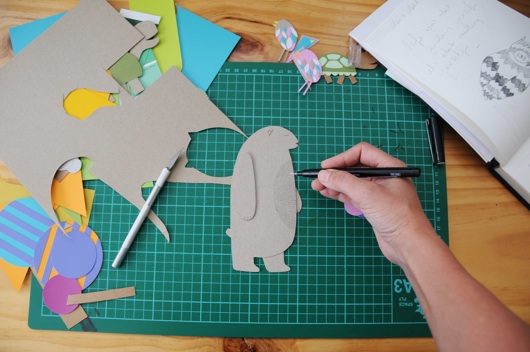 Work in progress: a bear gets some hair
Work in progress: a bear gets some hair
Can you tell us about a recent project you are particularly proud of? Common Ground was approached by Paul Ducco from All Things Considered to develop a poser for the Languages Other Than English (LOTE) student film festival. The posters were to be hung up around schools and given to all the participants, school aged children (12-18yrs old), so the artwork had to be fun, without being too childish and relate to theme the UN's theme of 2011 'Forests for Everyone'.
We sat down and did some brainstorming and kept returning to the idea that forests evoke a sense of fantasy and whimsy, of secret worlds and hidden characters. We decided to develop a set of anthropomorphicanimals and felt that in support of the forest theme we wanted to create this project without using any new materials. We collected cereal boxes, drink packaging, old paint swatches and got to work! We sketched up the characters and then set about manually cutting and pasting all of the characters together before scanning them all and digitising the final product.
 Work in progress: LOTE poster taking shape
Work in progress: LOTE poster taking shape
 Work in progress: creating a whimsy world with unexpected materials
Work in progress: creating a whimsy world with unexpected materials
 The finished product: LOTE film festival poster
The finished product: LOTE film festival poster
What challenges have you come up against in trying to make your practise sustainable and how did you overcome them? The biggest challenge I have is tracking down sustainable resources, trying to gain certification on fair trade or organic materials or track down local/community based suppliers. I wouldn't say I've overcome this yet but websites like Oh My Green, The Green Directory and Eco Directory sure do help!
Is there anything you’d like to do or learn to make your work even more sustainable? I spent the weekend at the Sustainable Living Festival (in Melbourne) and have become fascinated with permaculture, so I'd love to learn more about that, but I'm not sure that will make my work even more sustainable! I think a large part of being sustainable comes down to your community focus. If you can easily trace the source of your materials and produce your work locally there's a good chance you're on the right track. So I'd love to learn more about my community, engage closely with what other people are doing around me and hopefully create some more opportunities for fantastic collaborations!
Are there any other designers or makers with an environmentally-aware focus that you are inspired by? A lot of people are becoming more aware of our environmental and social impact, which is something I respect and admire. People are making small changes to they way they look at and approach their work, it's this level of consciousness which will make a big difference in the long run, from the kids over at Cassette who've become Carbon Neutral to the beautiful people over at See Saw who produced the most stunning and sustainable piece of work in their Finsbury Sustainability Report (2010).
But if I'm talking about the people whom I admire the most and am inspired by it would have to be the bunch over at Small Giants. They look at the big picture stuff. To quote straight from their website. "Small Giants was founded in 2007 to create, support, nurture and empower businesses that are shifting us to a more socially equitable and environmentally sustainable world. Some people call this type of business social enterprise. We just think it makes sense." I couldn't have said it better myself!
Phoebe Miller is a Brisbane-bred, Sydney-fled, Melbourne-embedded gal who enjoys making, spruiking, collecting, exploring, telling her friends where to eat and posting photos of doors on instagram. After several years working in corporate marketing and communications, Phoebe followed the urge to explore her creative side. These days she divides her time between her sustainable fashion accessories label, Simply Phoebe, and freelance PR consulting.
Eco-friendly practice: Simply Phoebe
By Phoebe Miller
I am delighted to join the CWC blog team to bring you a monthly feature profiling individuals and businesses that apply a sustainable or eco-friendly approach to their creative practice.
Aside from the environmental benefits doing more with less and minimising our environmental footprint, what excites me about this topic is the pure creativity and innovation that's usually involved. From the use of unexpected recycled materials to the development of new technology and techniques, I'm constantly being amazed, surprised and inspired by what others are doing.
To kick things off, I thought it only fair that I lay my cards on the table by sharing my own approach to operating an environmentally sustainable creative practice. But before I do, I have to make a disclaimer: I'm by no means an expert! I am constantly learning about ways I can do more with less and further minimise the environmental impact of my business, which will make this column as much a journey of learning and discovery for me, as I hope it is for you!
In the studio. Photo by Mishy Lane for Finders Keepers.
Simply Phoebe neckpieces
What do you do?
I design and make a range of wearable fabric accessories under the name Simply Phoebe.
What are the key elements in your sustainable or eco-friendly approach?
Firstly, I try to only use fabrics that are vintage, second-hand, remnants (leftovers, oddly sized pieces, seconds, or ends of rolls from fashion collections), and recycled or reclaimed (including second-hand and damaged clothing and manchester).
Secondly, I try to minimise my production waste and always experimenting with different ways to use what waste I do generate. I've used the offcuts created by my overlocker as a stuffing to create the baubles in one of my designs and the ends cut off my fabric tubes to make bangles and looped necklaces.
The Simply Phoebe fabric stash. Photo by Mishy Lane for Finders Keepers.
Where do you source your materials?
I'm always sourcing! I can't pass an op shop or vintage store without doing a quick scan inside. I've obviously spread the word well because I am often the very appreciative recipient of unwanted fabric stockpiles from friends and family.
I also do custom orders for customers who have a special item of clothing or fabric they'd like made into a neckpiece. One of my most challenging but ultimately rewarding was working with a piece of embroidered vintage Japanese obi fabric.
When I do larger collections for a specific market or stockist and need to secure a certain amount of material, I hit remnant fabric suppliers such as Rathdowne Remnants and upstairs at CLEARIT on Brunswick Street.
Obi fabric: after
Is there anything you'd like to do or learn to make your work even more eco-friendly or sustainable?
I am interested in possibly designing my own fabric. In order to do this, I'm keen to research sourcing sustainably and ethically made fabric or how I could print onto existing remnant or second-hand fabric, using eco-friendly inks.
Phoebe Miller is a Brisbane-bred, Sydney-fled, Melbourne-embedded gal who enjoys making, spruiking, collecting, exploring, telling her friends where to eat and posting photos of doors on instagram. After several years working in corporate marketing and communications, Phoebe followed the urge to explore her creative side. These days she divides her time between her sustainable fashion accessories label, Simply Phoebe, and freelance PR consulting.




